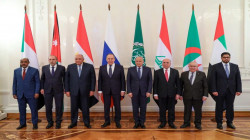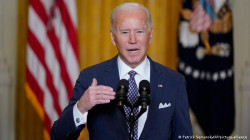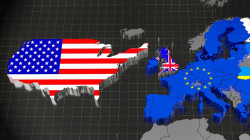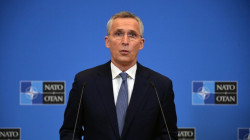"V" vs. "Z": role of media in psychological weaponization of Russia-Ukraine war
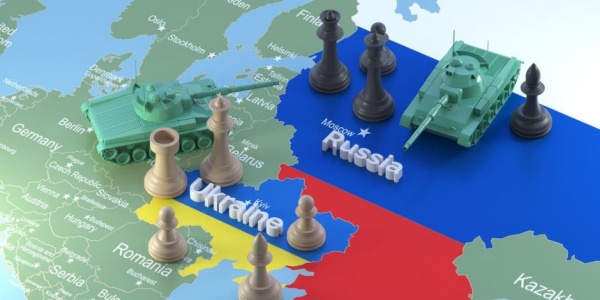
Shafaq News / "Welcome to the new-classic global media system", where a merely daily life event becomes a publishing material with eastern Europe under the scope due to the ongoing war between Russia and Ukraine. The crux of quality news principles -such as accuracy, credibility, objectivity, integrity, etc- has taken retreat, if not gone totally into oblivion, and were supplanted by scoops or propagandas that ultimately serve the agenda of the media organization. The deliberate marginalization of quality media values might spawn a "historiography crisis"; similar to when a U.S. senior reporter compared Iraq's civilization to Ukraine unfavorably.
As bombs rain on Ukrainian cities, the entire world is experiencing a psychological weaponization of war and its exploitation as a tool of indoctrination and statecraft in the hands of the establishment from both sides. The media coverage of the undoubtedly tragic battle taking place in Ukraine is riddled with "structural information traps" that have become ever more luring and incendiary.
As events unfold, a narrative is constructed and transposed over the reporting, reinforced by sensationalist imagery that could rationalize demonizing the Russian President, Vladimir Putin, and sometimes an entire nation, Russia.
The media of the "Free World" is disseminating dishonest or otherwise uncritical coverage, fake news, disinformation, and propaganda aimed at conditioning the public to internalize the anti-Russian Manichean narrative of a deranged madman's random war of aggression.
Not only has the western coverage of the Ukrainian war been highly charged, morally self-righteous, and plainly political, it actively demands a collective suspension of disbelief as it cultivates and redirects a natural reaction of sympathy felt by all into a moral outrage that insists on certain retaliation.
Less than 24 hours from the beginning of the battles in Ukraine, including near the capital city, Kyiv, one of Russia's leading television stations, aired a history lesson on an 18th century battle between German and Russian forces in Poland.
It was the kind of nationalistic propaganda typical of media coverage in a nation where the Kremlin exercises near-universal control. However, it also appears to be slipping, which could present Putin with a fresh challenge as he faces domestic and international opprobrium for his attack on Ukraine.
Rousing history lessons about World War II and vituperative attacks on Ukraine and its Western allies have crammed Russian media in recent days, as the Kremlin resorted to tactics it uses whenever it needs to convince the Russian populace, and quell any dissent.
Russian television channels, controlled either directly or indirectly by the government, portray Russian troops being greeted as liberators on a "special military operation" in Ukraine that is limited to protecting Russian-speaking enclaves.
That selective focus has been echoed by reporting from Russia's state broadcaster, which dispatched its most battle-hardened war correspondents to Donetsk and Luhansk, where they have filmed tearful separatist fighters being reunited with their families and the aftermath of Ukrainian shelling.
The limited glimpses of the Russian offensive in other parts of Ukraine offered by the state broadcaster, as a Russian strike on the main television tower in Kyiv on Tuesday, and images of Russian forces seizing the area around the former Chernobyl nuclear plant, have been described as defensive in nature.
When images of the bombing of Kharkiv's main square, and its opera house, spread too widely on social media for Russian television to entirely ignore, the state broadcaster finally acknowledged the footage but claimed that the strike on the Ukrainian city had been carried out by Ukraine's army to frame Russia.
In the opening days of the invasion, no story was more prominent than that of the Ukrainian soldiers giving their lives to defend a small island in the Black Sea from a Russian warship. When asked over the radio to disarm and surrender, the soldiers responded with "Russian warship, go f*ck yourself"—their supposedly final act of defiance before the ship opened fire and killed all the soldiers on Snake Island.
In framing the war in Ukraine, much of the media has found its main protagonist in President Volodymyr Zelensky, the 44-year-old comedian turned statesman now leading his country's defense from the besieged capital. Zelensky is indeed a compelling figure, but the media coverage has occasionally bordered on hero worship.
Western media also portrayed the ongoing war as a confrontation between a communist pagan Russia and a Christian Europe. U.S. media showed Churches and Cathedrals in Germany and France ringing bells in an act of showing implicit religious support to the country seeking to join Europe.
Many images are being broadcast of Russian army vehicles heading towards Ukraine, and a particular symbol seen on many of the tanks has drawn attention. A letter ''Z'' is displayed on tanks, trucks, and other army vehicles, which at times appears framed within rectangles and even triangles.
One of the hypotheses is that they serve to avoid 'friendly fire' between other Russian combat vehicles, as the Russian and Ukrainian tanks are of the same model. It is also speculated that they may be the places where the units are destined. Others assume that the signal demonstrates that the Russian army is resolute about victory.
The Russian "Z" brings back to memory the iconic "V" which the U.K. Prime Minister Winston Churchill publicized as a gesture of victory during World War II. Between "Z" and "V", a sophistic manipulation of public discourse continues to manufacture consent around the policies of the conflicting states.
